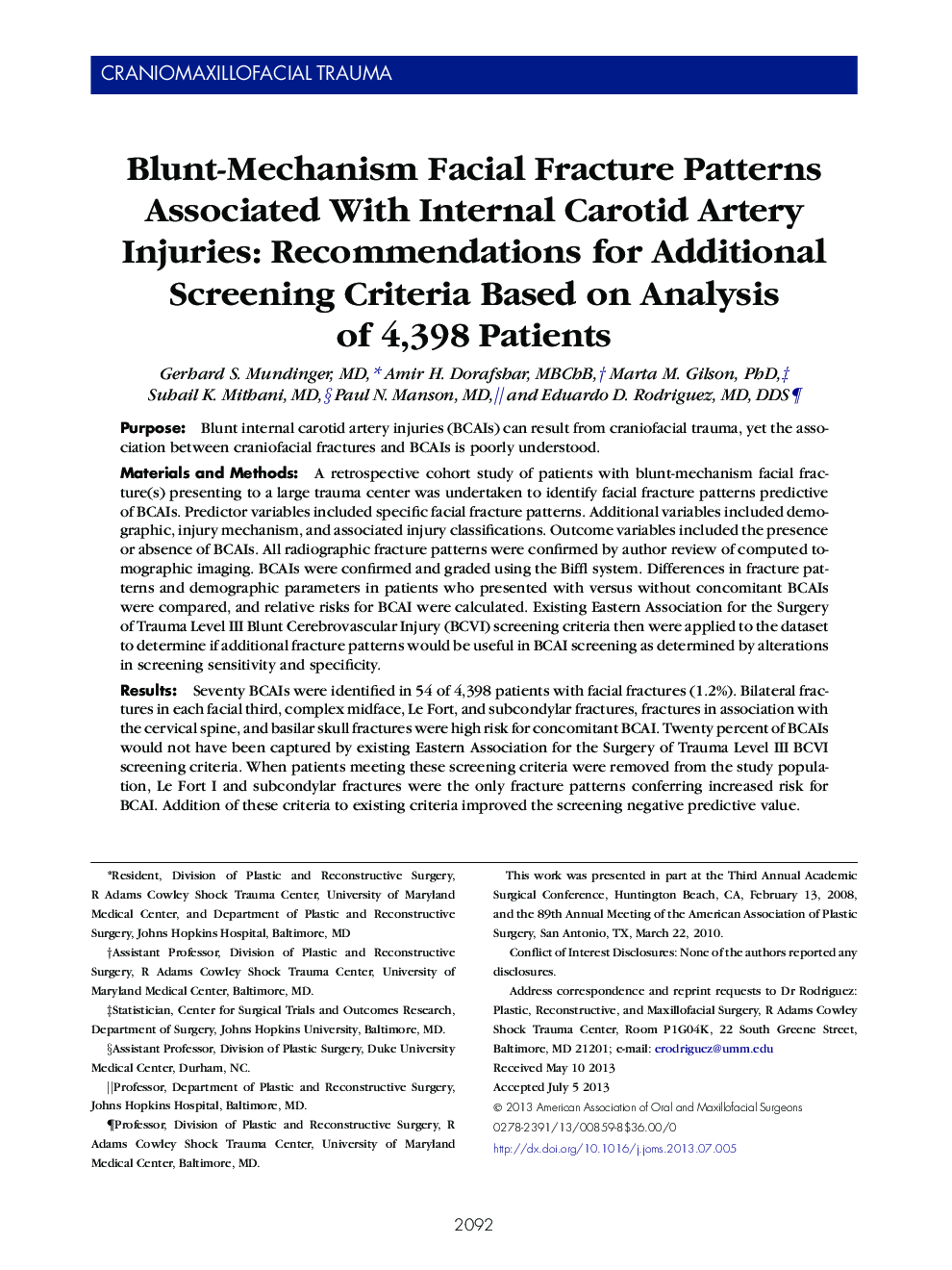| Article ID | Journal | Published Year | Pages | File Type |
|---|---|---|---|---|
| 3152552 | Journal of Oral and Maxillofacial Surgery | 2013 | 9 Pages |
PurposeBlunt internal carotid artery injuries (BCAIs) can result from craniofacial trauma, yet the association between craniofacial fractures and BCAIs is poorly understood.Materials and MethodsA retrospective cohort study of patients with blunt-mechanism facial fracture(s) presenting to a large trauma center was undertaken to identify facial fracture patterns predictive of BCAIs. Predictor variables included specific facial fracture patterns. Additional variables included demographic, injury mechanism, and associated injury classifications. Outcome variables included the presence or absence of BCAIs. All radiographic fracture patterns were confirmed by author review of computed tomographic imaging. BCAIs were confirmed and graded using the Biffl system. Differences in fracture patterns and demographic parameters in patients who presented with versus without concomitant BCAIs were compared, and relative risks for BCAI were calculated. Existing Eastern Association for the Surgery of Trauma Level III Blunt Cerebrovascular Injury (BCVI) screening criteria then were applied to the dataset to determine if additional fracture patterns would be useful in BCAI screening as determined by alterations in screening sensitivity and specificity.ResultsSeventy BCAIs were identified in 54 of 4,398 patients with facial fractures (1.2%). Bilateral fractures in each facial third, complex midface, Le Fort, and subcondylar fractures, fractures in association with the cervical spine, and basilar skull fractures were high risk for concomitant BCAI. Twenty percent of BCAIs would not have been captured by existing Eastern Association for the Surgery of Trauma Level III BCVI screening criteria. When patients meeting these screening criteria were removed from the study population, Le Fort I and subcondylar fractures were the only fracture patterns conferring increased risk for BCAI. Addition of these criteria to existing criteria improved the screening negative predictive value.ConclusionSpecific facial fracture patterns, including bilateral fractures in any facial third and complex midface, Le Fort I, and subcondylar fractures, confer increased risk of BCAI, especially in association with basilar skull fractures. Suspicion for BCAI in these patients may improve diagnosis and enable prompt therapeutic intervention. Addition of Le Fort I fractures to existing BCAI screening criteria improves sensitivity and may be of clinical utility in ruling out BCAIs.
